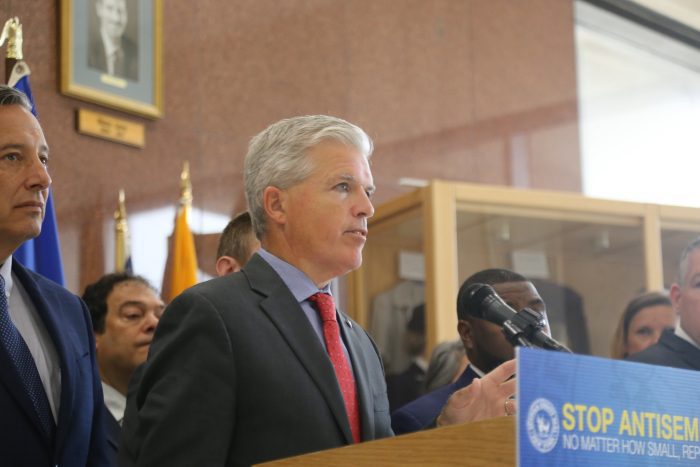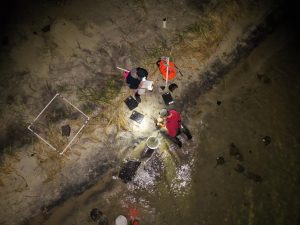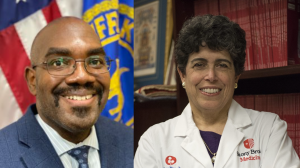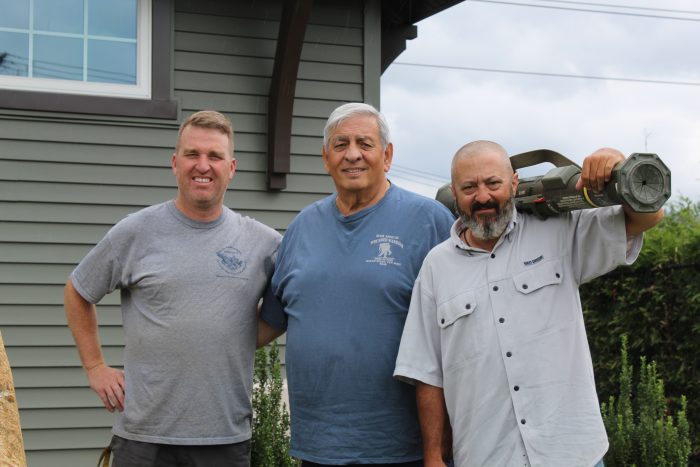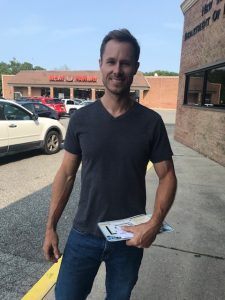Suffolk County is making antisemitism an area of focus, creating a new hotline to facilitate the reporting of antisemitic incidents.
County officials say the program will enable them to monitor developments within Suffolk communities, attaining a clearer picture of what is happening on the ground. Using the county’s existing 311 call center, Suffolk residents can call the hotline to report acts of antisemitism.
“Unfortunately, antisemitism is something that we continue to see in our region, our country and throughout the world,” Suffolk County Executive Steve Bellone (D) said during a press event Tuesday, Aug. 15, announcing the program. “That’s why we have to remain vigilant in identifying what antisemitism is, what it looks like and how it impacts so many.”
The county executive encouraged residents to use the hotline, regardless of whether they believe an act meets the criteria of antisemitism. Bellone acknowledged that while coming forward may be difficult for some, Suffolk 311 “can provide complete confidentiality.” But, he added, residents should nonetheless report these instances whenever possible.
 “The biggest concern is the lack of reporting, the underreporting that’s occurring out there,” he noted. “We want to make sure we have as much robust reporting as possible, so we have a full picture of what’s happening” within the community.
“The biggest concern is the lack of reporting, the underreporting that’s occurring out there,” he noted. “We want to make sure we have as much robust reporting as possible, so we have a full picture of what’s happening” within the community.
“Through 311, we can better document and track these occurrences, allowing us to work proactively toward eliminating antisemitism in our community,” he added.
Mindy Perlmutter, executive director of the Jewish Community Relations Council of Long Island, suggested the hotline could help provide authorities with a realistic understanding of potential antisemitic trends within the county.
“Now we’re going to be able to see the numbers … to see where we are seeing issues, what kind of issues we’re seeing, and then we’re going to be able to figure out the best way to combat those issues,” she said.
Allan Richter, chair of the Suffolk County Jewish American Advisory Board, said the hotline represents a vital measure against several dangerous currents taking place more broadly, referring to antisemitism as “a relentless problem.”
“Just about daily, we hear about or see reports in the media of antisemitism somewhere in the world,” he said. “The 311 initiative is part of a multilayered approach driven by forward thinking.”
Suffolk County Legislator Jason Richberg (D-West Babylon), the minority leader in the county Legislature, emphasized the role of residents in collecting accurate data. He maintained that “nothing is too small” to report.
“Small actions have led to larger actions throughout our history that have been destructive to many different communities,” he said. “To stand against that, we need to make sure that we know what those are, report it and make sure that information is given to the [county] police department.”
The minority leader added that this effort is part of an ongoing education campaign within Suffolk County that aims “to tell people this is not right, it’s not fun and this isn’t a joke.”
Officials maintained that the 311 antisemitism hotline is not a substitute for traditional emergency response services. In the event of an emergency, please call 911. For other types of hate crimes, the county hotline is 631-852-HATE (4283).

